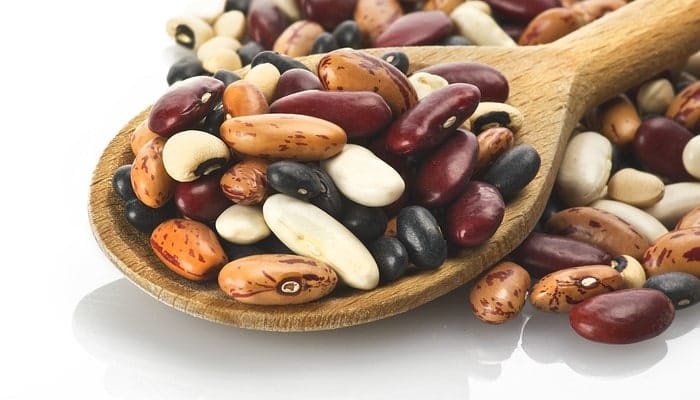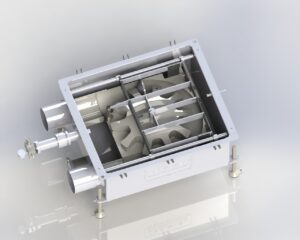Embark on a captivating journey as we delve into the intriguing history of dried beans and how it all started. From the fertile lands of South America to the global tables, this plan has been a culinary cornerstone for thousands of years. Uncover the beans’ fascinating evolution from humble beginnings to an essential part of diverse cultures worldwide.
History of Dried Beans – How It All Started?
Beans have been a part of human diets for thousands of years, and they come in hundreds of sizes, shapes, and colors. The term “bean” is quite broad and covers a variety of plants from the Leguminosae family. Also, we use that same term for the seeds of plants that we consume as food. In the beginning, only the broad bean or fava bean was called a bean.
Over time, other plants were named beans. Some of them are runner and common beans, vetches, chickpeas, lupins, peas, soybeans, and even seeds of plants that aren’t even similar (for example, coffee and cocoa beans),
These are amazingly convenient and versatile because they can be dried and stored for years. To bring them back to life, you only need to soak them in water for a couple of hours to activate their proteins, vitamins, minerals, and enzymes. Some of them can be eaten raw, but they are typically cooked or sprouted. They can also be curdled into tofu, ground into flour, and fermented into miso, tempi, and soy sauce.
Cultivation and Trade Routes – Pioneering the Diversity of Native Beans
Examining the origins of the dry bean takes us back to South America. These, serving as a dietary cornerstone, were initially cultivated over 7,000 years ago in the southern regions of Mexico and Peru. In Mexico, indigenous communities were responsible for cultivating diverse bean varieties, including black, white, and beans of various color patterns.
Meanwhile, in Peru, situated in the Andes, a vibrant spectrum of colors characterized their bean varieties, which were notably bright and lively. A distinction emerged between these two cultivation centers, with Peruvian natives focusing on the development of large-seeded bean varieties while their Mexican counterparts cultivated smaller-seeded types.
Because Indian tribes wandered across the American continent through a complex system of trade routes and trading centers, they migrated, explored, and traded with other tribes. These native farming practices made beans spread gradually all over North and South America. Besides beans, they traveled with other supplies, such as stones for tool making, animal hides, and shells. After generations of cultivation and selection, each tribe had its own locally adapted bean for trade, seed, food, and gifts.
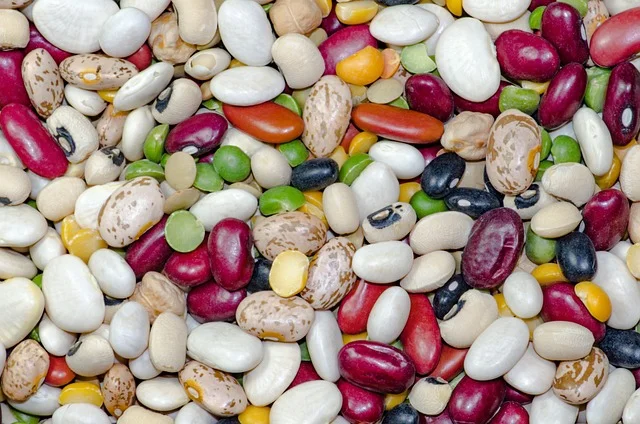
The Common Bean – Domestication and Culinary Evolution
The indigenous people of the Americas relied on the common bean as a dietary staple, particularly in the Andes and Mesoamerica. This vining plant, characterized by small seeds and twisted pods, serves as the progenitor of nearly all modern bean varieties, including dry, soup, shell, and snap beans.
Some areas of Mexico still witness the wild growth of this bean. The earliest known cultivation of the common bean dates back approximately 8,000 years in Peru. Additionally, three other bean types within this genus have undergone domestication:
- Tepary beans were cultivated around 5,000 years ago in northwestern Mexico (the Sonoran Desert) and the southwestern United States.
- Runner beans were cultivated in Mexico around 2,200 years ago.
- Lima beans were cultivated near Lima, Peru, roughly 5,500 years ago.
From the Americas to Europe, Asia, and Africa
For thousands of years, the common bean has migrated across the world – from the American continent to Europe and then back again with European immigrants and explorers. By the time Spanish and Portuguese explorers discovered America, several varieties of beans were already flourishing. Upon discovering the New World, the early European traders and explorers also discovered new types that they brought back to Europe and shared with other nations.
By the early 18th century, beans had become a very popular crop in Europe, Asia, and Africa. Furthermore, when European explorers arrived in the New World, natives introduced them to Three Sisters – a companion planting technique. This technique involves growing beans, squash, and corn together – after decades of experimentation, the natives noticed that they were productive when planted together.
Up to this point, Europeans were only familiar with fava beans, and when they set their sails back to Europe, they took along seeds from the crops the indigenous people had introduced to them. Through migration and trade, these spread across Europe over the next few centuries.
The Return to America
After taking bean cultivars to Europe, European settlers renamed them and returned to North America. Here are some of the most popular varieties:
- Hutterite Soup beans came to the United States from Russia via Austria in the late 19th century with a communal and pacifist Christian group called the Hutterites. They migrated there to avoid religious persecution and settled in the upper Midwest and Canada.
- Mayflower beans became a staple in North and South Carolina after coming over on the Mayflower in 1620.
- Bolita beans, it is not clear whether the Spaniards only picked them up while traveling north through Mexico or brought them from Spain.
- Flageolet beans come from France.
- Navy beans came from Italy.
Immigrants who brought seeds from Europe used to grow them and select plants that adapted to the local climate. Then, they passed down the seeds as family heirlooms, and some cultivars were picked up by seed companies for sale and development. One of the most popular heirloom beans is the Kentucky Wonder pole bean. Before being named Kentucky Wonder (1877), it was called the Texas Pole and Old Homestead.
The dry edible bean commercial industry started in New York in the mid-1800s, during which time New York remained dominant in the industry. After New York, Michigan took the lead in the early 1900s until North Dakota prevailed in the early 1990s, retaining its position as the largest producer of dry beans in the U.S. (32%).
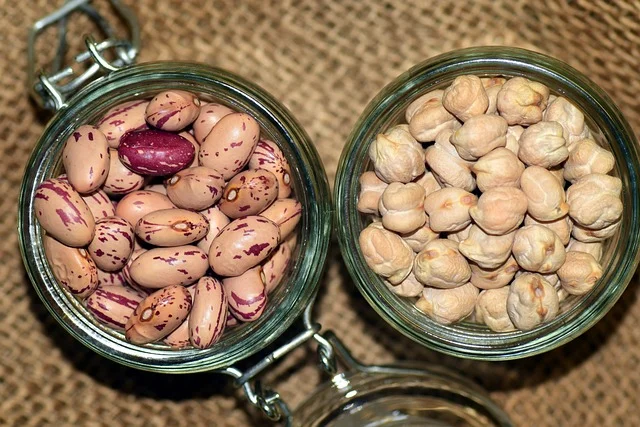
Harvesting and Preserving Nutritional Riches – The Art of Drying Beans
Dry beans are dried for storage. Certain varieties of bean plants – such as Kidney Beans, Black Beans, Great Northern Beans, and Navy Beans – are grown expressly for drying. The bean plant produces its seeds in pods, and we refer to those seeds as – beans.
To dry the beans, the bean pods are left to fully mature on the plant, or even longer, to let them dry out. Then, the pods are opened up, and the beans are extracted and dried even more (if necessary). The pods can be used as animal fodder or are discarded.
Drying is an efficient way to store high-protein foods because it doesn’t require any energy to keep them stored (like freezing) or processing (like canning). As for the health benefits, they are numerous. They are packed with protein and fiber, boost heart health, help manage diabetes, and assist in losing weight.
Beans Amid Crisis – A Surge in Demand and Culinary Versatility
During the national emergency that came as a result of the COVID-19 outbreak, the bean industry experienced sudden growth because people began stockpiling long-lasting food products, including beans (both dried and canned). These are also versatile because they pair well with different meats, like lamb and chicken, can be mashed or kept intact, and go well with salads and soups.
In this expansive narrative, the significance of the tubular conveying system becomes evident. An indispensable component in modern bean processing, this automated conveyor system facilitates the gentle and efficient movement from cultivation to their ultimate destination, embodying the evolution of technology alongside the rich history of these culinary staples.
Cost and Yield of Dried Beans
Beyond their rich history and cultural significance, understanding the financial aspects of dried beans reveals a tale of cost-effectiveness and abundant servings. From unraveling the economic advantages to delving into the nutritional benefits and superior taste, let’s check out the value proposition and culinary potential that make dried beans a staple in households worldwide.
- Better Value
A can costs about $1.20 (on average) and yields 1-2 cups of beans. On the other hand, a pound of dried product costs about $2 and yields up to 7 cups of cooked beans. It comes out to about 25 cents per cup once cooked and 60 cents per cup of canned beans. In other words, if you go with dried products, you will save money and create more servings.
- Controlling the Sodium
Beans are packed with fiber, protein, minerals, and vitamins. However, canned ones can be high in sodium, which may affect the health of those with high blood pressure. With cooked dried beans, you can control the amount of salt you are taking in.
- Easy to Cook and Tastes Delicious
The depth of flavor and texture of homemade dried beans is much better than that of canned products (which may have a metallic taste or can be too mushy or salty). Dried beans are also easy and convenient to prepare, and they can be combined with different types of meat and vegetables.
Role of Conveyor Systems Manufacturers in Bean Drying
The customizable dry bean conveyor manufacturing systems, engineered by manufacturers such as Cablevey Conveyors, play a crucial part in the seamless movement from cultivation to the drying phase. Their expertise ensures gentle handling, preventing material breakage, and enhancing cleanliness – critical factors in preserving the quality of dried beans.
As a result, beans are efficiently processed, facilitating their transformation into long-lasting, protein-rich foods. The commitment of automated conveyor systems to quality and precision aligns seamlessly to create a sustainable, energy-efficient solution for bean storage, demonstrating their vital role in the broader spectrum of agricultural and food processing industries.
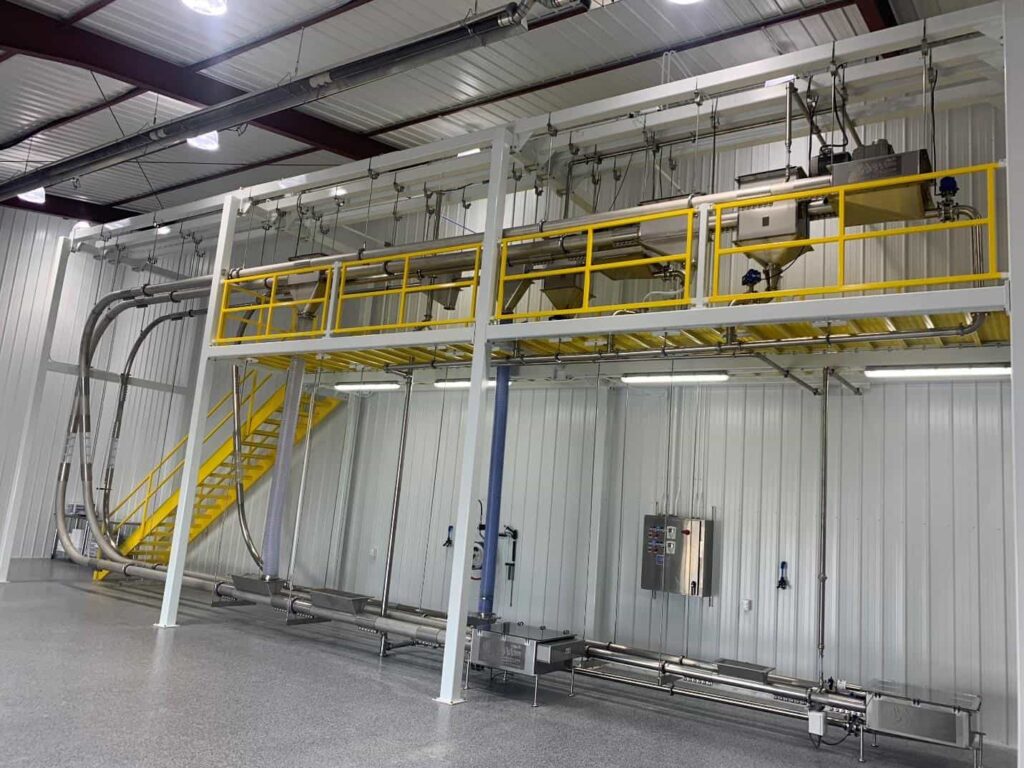
Redefining the Bean Processing Landscape With Cablevey Conveyors
Whether it’s red, blackeye, pinto, adzuki, or mung beans, the conveying process should be done gently. To gently move them to their final destination (packaging), Cablevey Conveyors offers dry bean conveyor solutions that are suitable for moving different types of food ingredients and batch products. Each of our dry bean industrial conveyor systems is customizable and custom-specified by Cablevey’s engineering department to ensure that every system is optimized to client needs.Our conveyor technologies enhance cleanliness, prevent external elements from contaminating, and minimize material breakage. In other words, it decreases the risk of these costly problems that can negatively affect your bottom line (unprofitable equipment downtime, expensive maintenance interventions, and broken and wasted materials). Contact us today and let our engineers help you meet conveying needs.

